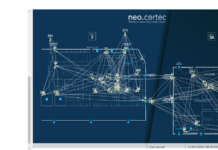
Network sunsetting has become a significant issue for the mobile industry, because of continued reliance on 3G and especially 2G for a variety of legacy applications and processes. Complications associated with 2G shutdowns in particular have led to calls for the same mistakes to be avoided when the time finally comes for 4G sunsets – in around a decade’s time.
After the arrival of 4G in 2009, some countries moved quite swiftly to shut down 2G and 3G, if they were unburdened by too many legacy applications and users still dependent on them. In the absence of pressure from stakeholders or regulators to retain old generations, operators could cut support and maintenance costs by sunsetting them, while liberating precious spectrum for 4G and then 5G.
Whereas the various versions of 1G were shuttered quite promptly under clamor for digital voice and SMS texting, 2G will have lingered on in some markets for more than four decades after it was first introduced in Finland in 1991. This reflects the widely varying circumstances of different markets – not always related to economic status or ARPUs generated.
Indeed, 2G and 3G generally are associated with low revenues, and many operators have found themselves caught in that cleft stick between the cost of retaining these legacy technologies and the reputational or other implications of closing them down. In many cases, operators are not obliged contractually to continue such services, but are naturally reluctant to cut large swathes of consumers or enterprise customers adrift.
This factor has led to the development of packages that enable the old Gs to coexist more cost effectively with 4G and 5G, through the sharing of base stations or spectrum, with the help of Open RAN in some cases. Some of these are discussed further later in this report.
Our study shows this wide spread of sunset times for 2G and 3G, which looks like being repeated for 4G during the 2030s, but to a lesser extent due to measures being taken to avoid supporting legacy generations once full coverage has been established with the latest RAN technology.
As we shall discuss, the drawn out nature of 2G and 3G sunsetting in some markets has helped stoke disenchantment among operators over the habitual 10 year cycle of generational upgrades for cellular services.
Some operators have been calling for this to change with 6G, in favor of a more organic development where obsolescence occurs more naturally and gradually without causing the ructions associated with 2G sunsets.
To cover this large spread of sunset dates, and also anticipate the first closures of 4G, our sunset forecast chart spans 30 years from 2011 to 2040. Operators with 2G and 3G services had already launched them in almost all cases by 2011, while 4G was coming along around that time. The start of the bright red segment then indicates launch of 5G at various times from 2019 onwards.
This is the latest forecast in the RAN Research Archive, which now includes:
- mMIMO – Market Forecast
- 5G RedCap – Market Forecast
- Network Slicing – Market Forecast
- Small Cell Densification – Market Forecast
- Open RAN Equipment – Market Forecast
- Fixed Wireless Access – Market Forecast
- Energy Use of Video and Mobile Networks – Market Forecast
- Connected Cars – Market Forecast
- 5G Network Slicing – Market Forecast
- RAN Automation – Market Forecast
- Private 5G Networks and WiFi – Market Forecast
- Small Cells and Network Edge – Market Forecast
- Open RAN & Macro RAN – Market Forecast
- 4G Deployments as 5G Backbone – Market Forecast
- vRAN and Open RAN Migration – Market Forecast
- 5G Core Migration – Market Forecast
Rethink Technology Research is an analyst firm that has established itself over its 21-year history as a thought leader in 5G, and all forms of wireless; the entertainment ecosystem and streaming media; the Internet of Things; and has now embarked on the energy marketplace. RAN Research is our wireless research team, producing market forecasts and technology white papers.
DOWNLOAD THE FULL EXECUTIVE SUMMARY


















